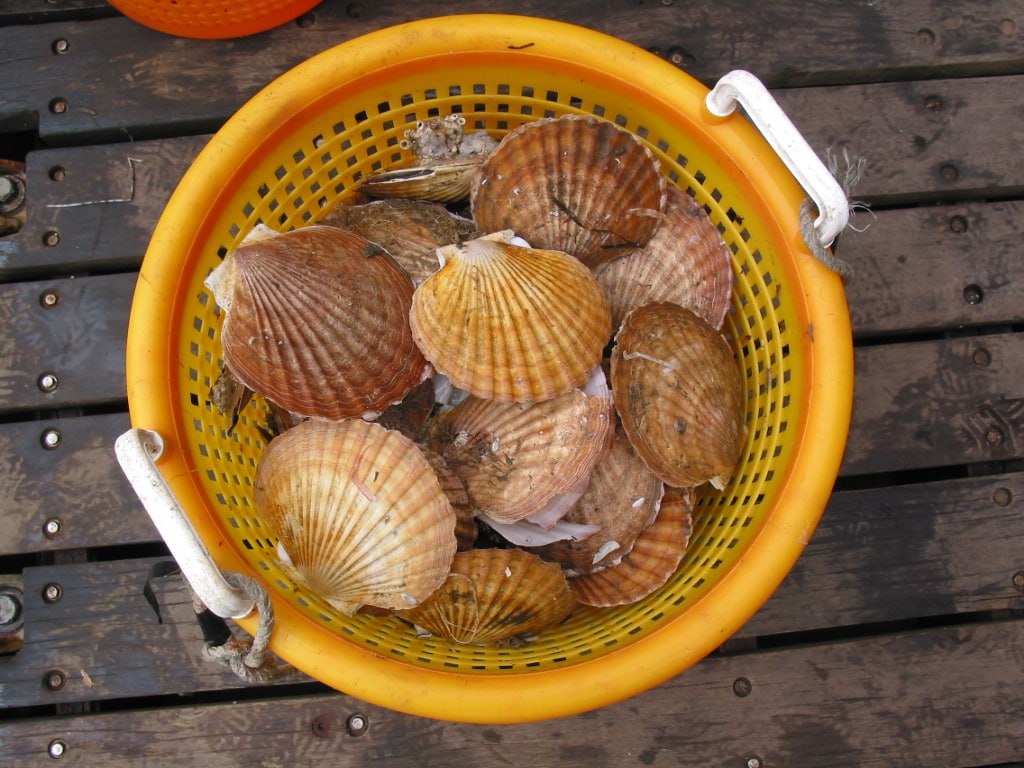
The scallop fishery in Alaska is jointly managed by the State of Alaska and the federal government under the Alaska Scallop Fishery Management Plan (FMP). Most aspects of scallop fishery management are delegated to the state, while limited access and other federal requirements are under the jurisdiction of the federal government.
Although there are a number of scallop stocks off the coast of Alaska, including weathervane scallop (Patinopecten caurinus), reddish scallop (Chlamys rubida), spiny scallop (Chlamys hastata), and rock scallop (Crassadoma gigantea), the weathervane scallop is the only commercially targeted stock at this time. Commercial fishing for weathervane scallops occurs in the Gulf of Alaska, Bering Sea, and waters of the Aleutian Islands.
Management of the Alaska scallop fishery is achieved using “guideline harvest levels” (GHLs) which are established at the beginning of each fishing season. In addition to GHLs, most scallop fisheries have crab bycatch limits. Fisheries are closed when either GHLs or bycatch limits are met. Large areas of productive scallop habitat are also closed to scallop dredging.
To increase economic efficiency, permit holders created a scallop fishing cooperative in 2000. Some cooperative members opted to remove their boats from the fishery and arranged for their shares to be caught by other members of the cooperative, providing the remaining vessels with additional fishing opportunities. In recent seasons, only four vessels have participated in the fishery. This fleet of 70 to 120-ft vessels each has a crew of eight to twelve who shuck and freeze scallops on board the vessels. Most scallops produced in Alaska are marketed directly by the cooperative. Except in the Cook Inlet Area, all commercial scallop fishing vessels are required by ADF&G to carry trained observers.
Staff Contact is Anita Kroska: 907-271-2805

